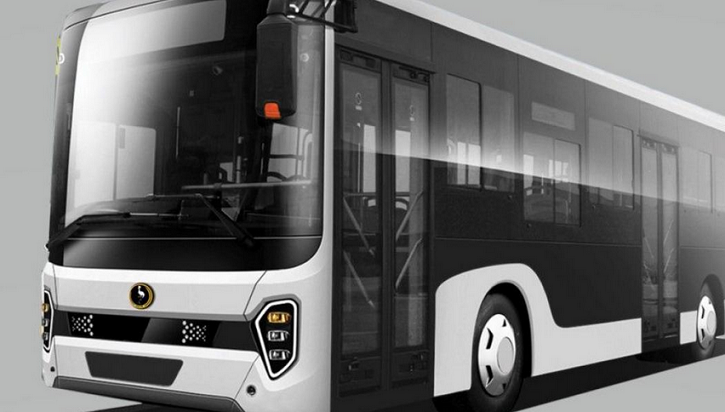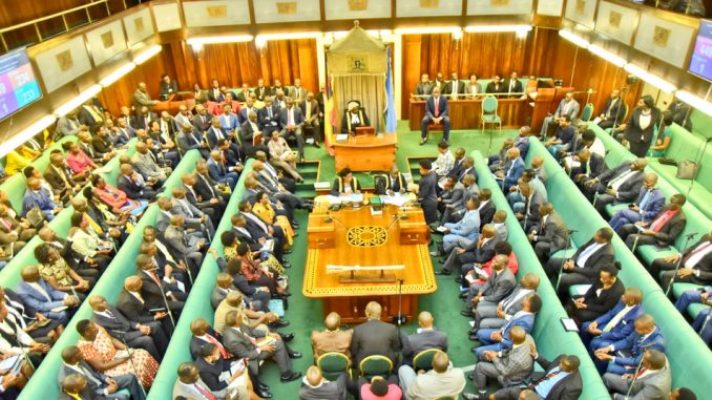An electric bus, a make of Kiira Motors Corporation.
A scientist at Busitema University has invented a battery derived from biomass-based materials and common salt. This kind of battery is likely to be a game-changer for Uganda as it ventures into Electric Vehicle (EVs) manufacture.
Currently, over 60% of the parts including batteries used by Kiira Motors (KMC) to manufacture cars and buses are imported from China. But Dr. Moses Kigozi, a lecturer and Materials Science and Engineering expert based ta Busitema says with the new science of fabrication of lithium-ion and sodium-ion batteries, Uganda can locally manufacture and end their imports.
“Because currently, we don’t have an existing plant for lithium-ion and sodium-ion batteries. I convert the locally available biomass like coffee husks, maize cob, and rice husks, convert them into graphite which can be used as the anode material or the negative part of the battery,” said Dr. Kigozi, who holds a Ph.D. in energy storage from India
He says he uses the common salts from around Lake Katwe to get lithium-ion and sodium-ion to make the positive electrodes to combine a cell. The cells that Kigozi has are able to power cellphones and laptops and if combined can power electric bikes.
Kigozi aims at massive production of eco-friendly batteries that can replace conventional activated carbon-based batteries made from fossil fuels. “Actually I want to have value addition to materials that people discard as waste. In one way, I’m trying to improve waste management because, in every acre of land where you harvest maize, you only target 20% while 80% is waste. So I use those materials to reduce the cost of the battery,” Kigozi told URN.
Lithium-ion batteries are expected to be the core of electric cars in the near future. So far, the power the electric grids as well as household technology like smartphones and computers. With the growing popularity of electric cars, it’s expected that the market for lithium-ion batteries will be US $100 billion by 2025.
But around the world, there are groups advocating for a reduction in the dependence on lithium in the manufacture of batteries. The mining of lithium in countries like DRC has been linked to environmental degradation as well as fueling conflict.
The main raw materials for lithium-ion, lithium, and cobalt, come from the earth, but they take a lot of energy and water to extract. Lithium is difficult to extract as it’s typically found in trace amounts. Studies in several continents have confirmed that biomass from all kinds of waste can be carbonized and used in anodes of lithium or sodium ion batteries, cathodes in metal‐sulfur or metal‐oxygen batteries, or as conductive additives. Kigozi in an interview confirmed this.
A more recent study in Renewable and Sustainable Energy Reviews found that various types of biomass for lithium-sulfur batteries have grown to be a competitor with Li-ion batteries. “Actually technology has been in existence and every year people try to improve the performance of the technology. The technology that is currently available, they are using what we call metal oxides in the positive part of the battery. I’m trying to reduce that metal and use carbon which is locally available,” he explained
So far the dominant battery solution for renewable energy has been lithium-ion batteries (LIBs). Those batteries are prone to explosions and they don’t last long enough and yet the world will need many more with bigger capacity but friendly to the environment.
“My process for converting biomass into graphite is zero emission. I don’t produce any greenhouse gases like carbon dioxide, hydrogen methane, and others. Everything is captured to improve performance,” he said
Kigozi kind of battery could attract interest from automakers like BMW and a group backed by German automobile giants including Daimler AG and Volkswagen AG that try to “green” image of their electric cars by using batteries that are not made from metals like lithium-ion. Kigozi is one of the three Ugandans with extensive expertise in the fabrication of batteries. His two counterparts already left Uganda for greener pastures.
“As far as I know, I’m the only one with a Ph.D. in energy storage. I have tried to look around, and the only two friends with whom we were collaborating from other countries went for greener pastures. One is working for Tesla and the other is in the USA,” Kigozi revealed.
At Kigozi’s workstation are rechargeable coin cells powering digital devices like watches, lamps, calculators, toys, and car remote controls. He also has cells in pouches for charging mobile phones and makes hybrid supercapacitors that are also key components needed in energy storage.
“In energy storage, we have capacitors and batteries. Capacitors are good at giving high power, and batteries are good at giving high energy. So we need a device that has both,” he explained. According to Kigozi, the tops of the capacitors were threaded from the engineering department at Makerere University, then the rest was assembled at Busitma University’s chemistry department. Kigozi told URN that he has not gone into mass production because he still lacks the machinery needed to do the assembling.
“I have the skills; I have the materials but I’m lacking the machinery to go full commercial. Otherwise, the market is readily available,” said Kigozi. While Uganda has about five startups that are able to assemble rechargeable battery backups for two-wheeler electric bikes, there is no company manufacturing lithium-ion batteries.
Zembo Electric Motorcycles Co-Founder Director, Daniel Dreher said what Kigozi is doing is to clear the ground to launch Ugandans to make cells for electric vehicles. “Because what is happening now, 90% of this market is Chinese. Even in Germany, there are problems that car manufacturers like Volkswagen or Mercedes need to buy battery cells from China. While in Uganda we have a unique opportunity even when landlocked to put those processes into our country because we have the raw materials” said Dreher
At a global level, 2022 has seen a sharp rise in prices for lithium which is a key mineral in the production of batteries for electric vehicles. Reports indicate that demand for lithium outstripped supply, pushing prices up almost 500% in a year. According to International Energy Agency (IEA), the World will need up to 10,000 Gwh of electricity by 2040 to meet the climate goals. That is fifty times the size of the current global energy production.
-URN






I am still pushing on and looking for funds for equipment but all the doors are still closed but one day I will break through with my innovation.
Thanks for your support
Wow this is wonderful and good news for our country. I can’t wait to see the progress of such an amazing innovation. Thank you Dr.
Intentional and precise efforts are collectively required to see such an idea blossom. What the Dr. has started should not be left to the dogs, he needs support. This is actually where the Ugandan government should come in and support this cool idea. This is what the world has been waiting for. Otherwise, Dr. well done